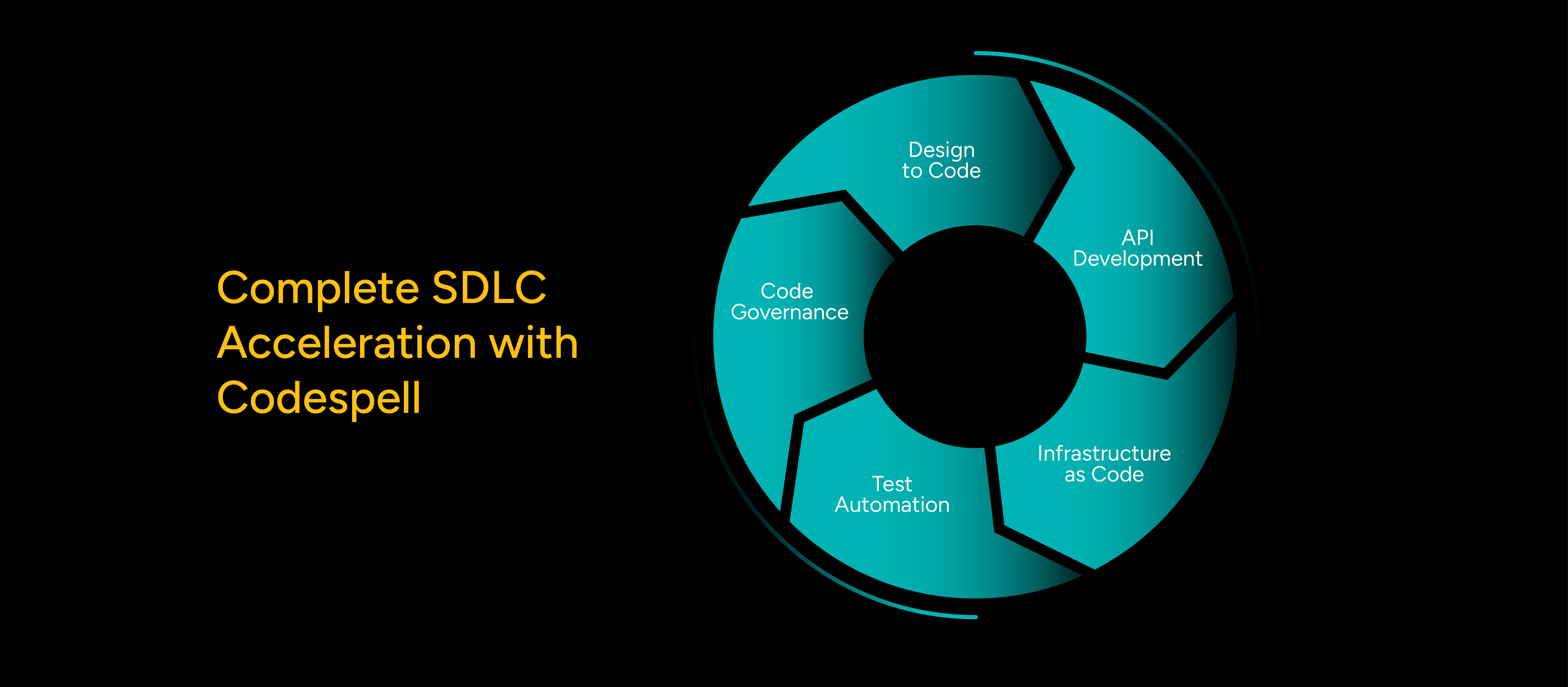December 1, 2025
I’ll admit it - I used to think AI-assisted coding was more hype than help.
Every tool I tried gave me fragments of value: a snippet here, a suggestion there.
But when it came to understanding how real development flows - the messy, interconnected, multi-file kind - most of them fell apart.
Then Codespell launched a few updates.
And suddenly, it felt like the tool had been reading my developer diary.
The Chaos Before Context
Let me paint a picture.
You’re deep in a refactor - cleaning up modules, optimizing API endpoints, maybe even preparing your Infrastructure as Code setup for a new environment.
You run your AI code review assistant, expecting clarity… and instead get scattered suggestions across multiple files with zero context.
Before Codespell’s Multiple File Context feature, I’d often end up second-guessing half the AI’s recommendations.
Sure, it caught issues - but it didn’t understand my architecture. A variable rename in one file could break a dependency in another, and the AI wouldn’t even blink.
Now, with multiple files included as context, Codespell doesn’t just look at isolated code blocks.
It “reads” across the project like a senior engineer would - connecting logic between files, checking dependencies, and understanding design intent.
It’s what I’ve always wanted from an AI SDLC system: awareness that real code doesn’t live in silos.
When the AI Stopped Guessing and Started Thinking
The Multiple Suggestions in a Single File feature was another quiet revolution.
Previously, I’d get one fix at a time - a kind of slow back-and-forth that made even small updates feel tedious.
Now, Codespell surfaces all suggestions within a file at once, lined up like a proper review checklist.
The best part? I can accept or reject each suggestion individually.
That’s a big deal when you’re in the middle of a design to code flow and don’t want the AI bulldozing over custom patterns.
It finally feels like a real pair-programming session - one where the assistant listens before it acts.
When the AI Stopped Guessing and Started Thinking
The Multiple Suggestions in a Single File feature was another quiet revolution.
Previously, I’d get one fix at a time - a kind of slow back-and-forth that made even small updates feel tedious.
Now, Codespell surfaces all suggestions within a file at once, lined up like a proper review checklist.
The best part? I can accept or reject each suggestion individually.
That’s a big deal when you’re in the middle of a design to code flow and don’t want the AI bulldozing over custom patterns.
It finally feels like a real pair-programming session - one where the assistant listens before it acts.
Chat That Knows What You’re Editing
There’s also something satisfying about how Chat Lists File Changes with Actions works now.
Before this release, I’d jump between the chat interface and file view constantly, trying to match what the AI suggested with what actually changed.
Now, Codespell shows file changes inside the chat itself, with options to apply, discard, or modify edits directly.
It’s like Slack met GitHub - and they actually got along.
That single change has saved me hours.
Because in real life, context switching is what drains your mental energy, not the coding itself.
Interrupts, Retries, and the Art of Control
Every developer knows this one: you send a big prompt to your AI assistant, and suddenly it’s spitting out the wrong thing - but you can’t stop it.
You wait, watch the output flood your screen, sigh, and restart the whole request.
Not anymore.
With the new Interrupt / Stop Chat Stream feature, I can kill an unwanted stream instantly.
That small button gives a huge sense of control.
And if the connection drops or something glitches mid-stream?
The Retry Request on Interrupts option resumes the response right where it left off.
No retyping. No repetition. Just continuity - which, if you’re like me, means you stay in flow instead of rage-refreshing your chat tab.
The “Continue” Button I Didn’t Know I Needed
Some days, I push Codespell hard.
Between long Figma to code conversions, backend logic validation, and IaC script reviews, I throw everything at it.
Earlier, long responses would sometimes cut off mid-way - just when it was getting to the good part.
Now, there’s a Continue Button for Lengthy Responses.
Tap it once, and Codespell resumes exactly where it paused.
It’s the digital equivalent of saying, “Go on, I’m listening.”
These small experience tweaks might not sound flashy on paper, but they’re what make the AI SDLC flow actually usable in production teams.
When AI Feels Like a Colleague
If I sound like I’m bragging about an AI, it’s because this release made Codespell feel more human - or at least more team-ready.
It now fits into my workflow, instead of forcing me to adapt to its quirks.
With the Toggle Current File Context option, I can decide whether the current file should be part of the generation scope or not.
When I’m debugging an integration issue, I sometimes want the AI to look at related services rather than the active file.
Now I can do exactly that.
That’s what real code governance looks like - control and flexibility in equal measure.
The Bigger Picture: AI in Real Development
AI coding tools aren’t new.
We’ve all tried them - autocomplete engines, test generators, design-to-code translators.
But few understand the rhythm of enterprise development.
Most of us work across multiple layers - front-end design systems, backend APIs, Terraform configurations, automated test scripts, and more.
When your AI can navigate all of that without losing context, you finally start seeing what an AI SDLC platform is supposed to be.
Codespell, for me, now covers that full cycle:
* Design to Code: Convert UI files from Figma to code while maintaining component logic.
* API Development: Generate and validate endpoints using shared schema awareness.
* Infrastructure as Code: Build IaC templates that actually align with app dependencies.
* Test Automation: Create unit and regression tests that tie back to generated specs.
* Code Governance: Track and approve all AI-made changes through transparent review workflows.

When you step back, it’s not just AI writing code anymore.
It’s AI managing the entire flow of how code evolves.
How It Changed My Day-to-Day
Before these updates, I’d treat AI like a sidekick - something I’d call in when I got stuck.
Now, Codespell runs beside me almost continuously.
When I’m sketching out new API endpoints, it predicts data structure mismatches.
When I move designs from Figma to code, it ensures the generated React components adhere to brand-defined UI logic.
When I deploy through Terraform, it checks my Infrastructure as Code setup for drift and dependency gaps.
All this happens through one unified chat interface - which, thanks to this release, is finally robust enough for real engineering work.
The biggest difference?
I’m not rewriting AI’s mistakes anymore. I’m building on top of its understanding.
The Future of Smart Development
The recent release reflects something deeper - not just features, but a product that listens to developer needs and thinks from a developer’s shoes.
Each enhancement - from multiple file context to chat-based file actions and recovery controls - shows that Codespell isn’t chasing trends.
It’s building for real developers, in real workflows.
If you’re in a product team juggling design to code, AI code review, API development, and Infrastructure as Code, you already know the friction points.
Codespell’s recent upgrades remove those quietly, one feature at a time.
And that’s the real story of this release - not AI doing magic, but AI understanding the craft behind how we actually build software.
The Future of Smart Development
This isn’t just about feature updates - it’s about a product that listens to developer needs and thinks from a developer’s shoes.
Every enhancement, from multi-file context to chat-based actions and intelligent recovery, reflects a deeper understanding of how developers actually work.
Codespell isn’t chasing trends; it’s evolving alongside real development practices - where context, control, and collaboration matter more than flash.
If you’re part of a team managing design to code, AI code review, API development, or Infrastructure as Code, you already know where the friction lies.
Codespell addresses those seamlessly, one thoughtful capability at a time.
And that’s what makes this shift meaningful - not AI showing off, but AI truly understanding the craft behind how we build software.


.png)







.png)